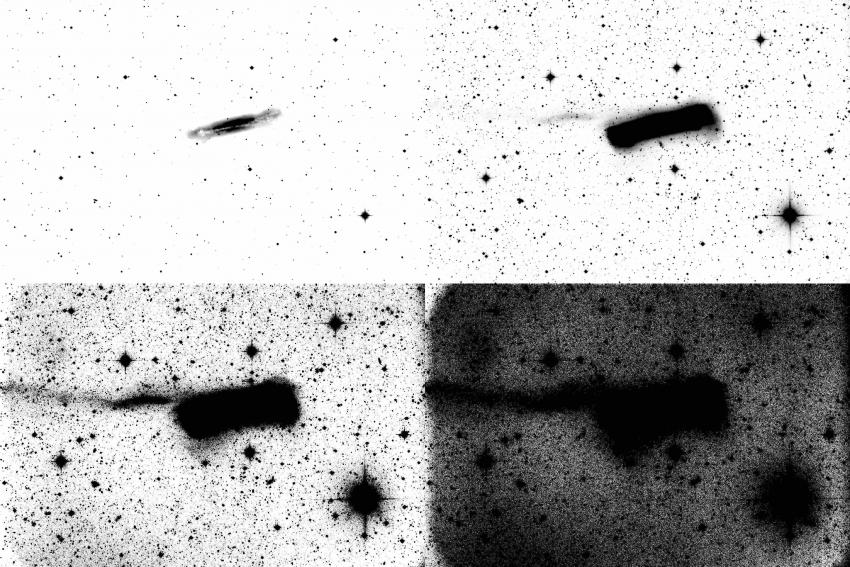Edge-on spiral galaxy NGC 3628
The nearby edge-on spiral galaxy NGC 3628 is 35 million light-years distant; the tail of material has an extent far exceeding the full diameter of the Milky Way. This illustration and the two following it have four panels that progress clockwise in illustrating fainter galaxy features. While the tail has been known for decades, the faintest parts of the disk reveal stars expelled roughly 100,000 light years from the collision that likely produced the tail, resulting in the odd "dog-bone" like structure. If it were visible to the eye, this galaxy's full extent would be greater than that of the full moon. The Galaxy and tail system is several times the size of our Milky Way.
R. Michael Rich, UCLA
Licence type


